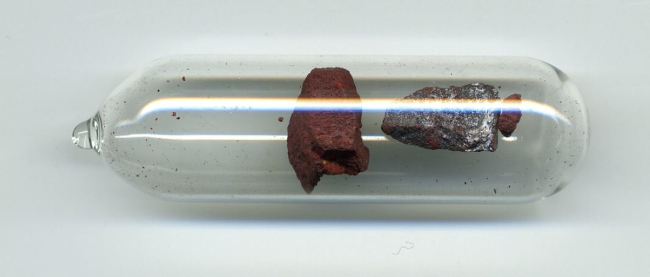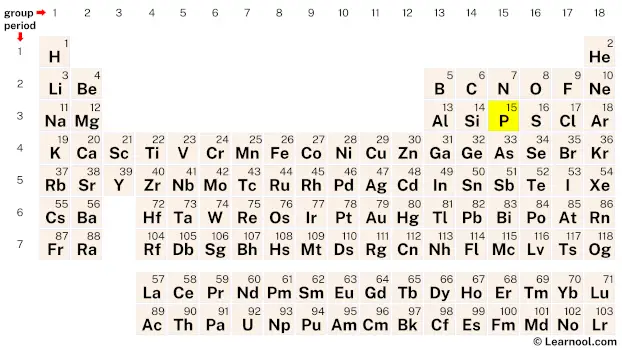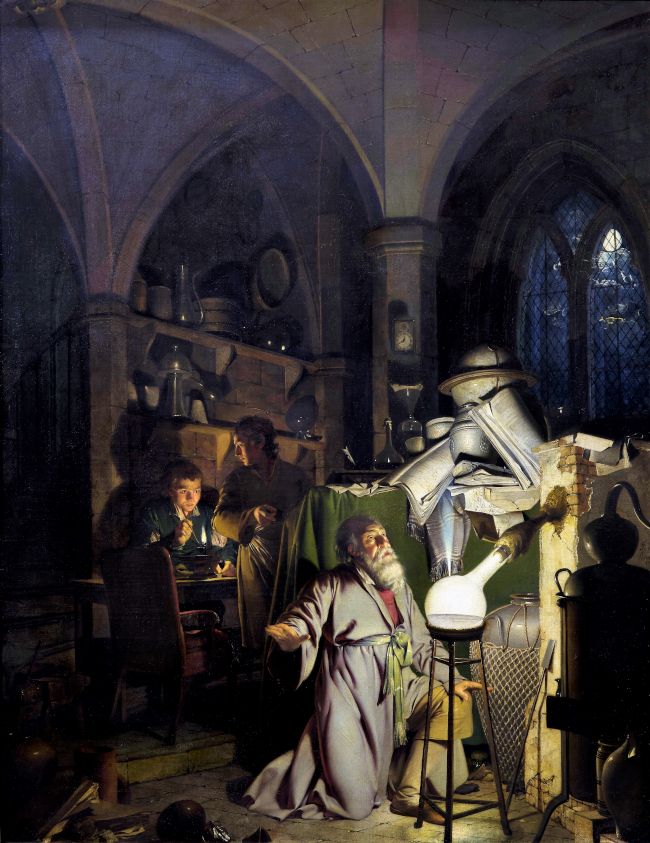
Phosphorus (P) is a chemical element of the periodic table, located in the group 15 and the period 3, and is having the atomic number 15. It is a soft, waxy, yellow-white reactive nonmetal, whose name comes from the Greek word “phosphoros”, which means light bringer or light carrier. It is a member of the pnictogen group and is the 11th most abundant element on earth.
On periodic table
| group | ⇨ | 1 | 2 | 3 | 4 | 5 | 6 | 7 | 8 | 9 | 10 | 11 | 12 | 13 | 14 | 15 | 16 | 17 | 18 |
| period | ⇩ | ||||||||||||||||||
| 1 | 1 H  Hydrogen |
2 He  Helium |
|||||||||||||||||
| 2 | 3 Li  Lithium |
4 Be  Beryllium |
5 B  Boron |
6 C  Carbon |
7 N  Nitrogen |
8 O  Oxygen |
9 F  Fluorine |
10 Ne  Neon |
|||||||||||
| 3 | 11 Na  Sodium |
12 Mg  Magnesium |
13 Al  Aluminium |
14 Si Silicon |
15 P Phosphorus |
16 S  Sulfur |
17 Cl  Chlorine |
18 Ar  Argon |
|||||||||||
| 4 | 19 K  Potassium |
20 Ca  Calcium |
21 Sc  Scandium |
22 Ti  Titanium |
23 V  Vanadium |
24 Cr  Chromium |
25 Mn  Manganese |
26 Fe  Iron |
27 Co  Cobalt |
28 Ni  Nickel |
29 Cu  Copper |
30 Zn  Zinc |
31 Ga  Gallium |
32 Ge  Germanium |
33 As  Arsenic |
34 Se  Selenium |
35 Br  Bromine |
36 Kr  Krypton |
|
| 5 | 37 Rb  Rubidium |
38 Sr  Strontium |
39 Y  Yttrium |
40 Zr  Zirconium |
41 Nb  Niobium |
42 Mo  Molybdenum |
43 Tc  Technetium |
44 Ru  Ruthenium |
45 Rh  Rhodium |
46 Pd  Palladium |
47 Ag  Silver |
48 Cd  Cadmium |
49 In  Indium |
50 Sn  Tin |
51 Sb  Antimony |
52 Te  Tellurium |
53 I  Iodine |
54 Xe  Xenon |
|
| 6 | 55 Cs  Caesium |
56 Ba  Barium |
72 Hf  Hafnium |
73 Ta  Tantalum |
74 W  Tungsten |
75 Re  Rhenium |
76 Os  Osmium |
77 Ir  Iridium |
78 Pt  Platinum |
79 Au  Gold |
80 Hg  Mercury |
81 Tl  Thallium |
82 Pb  Lead |
83 Bi  Bismuth |
84 Po  Polonium |
85 At  Astatine |
86 Rn  Radon |
||
| 7 | 87 Fr  Francium |
88 Ra  Radium |
104 Rf  Rutherfordium |
105 Db  Dubnium |
106 Sg  Seaborgium |
107 Bh  Bohrium |
108 Hs  Hassium |
109 Mt  Meitnerium |
110 Ds  Darmstadtium |
111 Rg  Roentgenium |
112 Cn  Copernicium |
113 Nh  Nihonium |
114 Fl  Flerovium |
115 Mc  Moscovium |
116 Lv  Livermorium |
117 Ts  Tennessine |
118 Og  Oganesson |
||
| 57 La  Lanthanum |
58 Ce  Cerium |
59 Pr  Praseodymium |
60 Nd  Neodymium |
61 Pm  Promethium |
62 Sm  Samarium |
63 Eu  Europium |
64 Gd  Gadolinium |
65 Tb  Terbium |
66 Dy  Dysprosium |
67 Ho  Holmium |
68 Er  Erbium |
69 Tm  Thulium |
70 Yb  Ytterbium |
71 Lu  Lutetium |
|||||
| 89 Ac  Actinium |
90 Th  Thorium |
91 Pa  Protactinium |
92 U  Uranium |
93 Np  Neptunium |
94 Pu  Plutonium |
95 Am  Americium |
96 Cm  Curium |
97 Bk  Berkelium |
98 Cf  Californium |
99 Es  Einsteinium |
100 Fm  Fermium |
101 Md  Mendelevium |
102 No  Nobelium |
103 Lr  Lawrencium |
|||||
| – p block |
Phosphorus is a p-block element, situated in the fifteenth column (nitrogen group) and the third row of the periodic table, denoted by the atomic number 15 and chemical symbol P.
Element information
 |
|
 |
|
| Origin of name | Greek word “phosphoros” (which means light bringer or light carrier) |
| Symbol | P |
| Atomic number (Z) | 15 |
| Atomic mass | 30.973762 u |
| Block | p-block |
| Group | 15 (nitrogen group) |
| Period | 3 |
| Classification | Reactive nonmetal |
| Covalent radius | 107±3 pm |
| Van der Waals radius | 180 pm |
| Melting point | White: 44.15 ℃, 111.5 ℉, 317.3 K Red: ∼590 ℃, 1090 ℉, 860 K |
| Boiling point | White: 280.5 ℃, 536.9 ℉, 553.7 K |
| Electron configuration | [Ne] 3s2 3p3 |
| Electrons per shell | 2, 8, 5 |
| Learn how to draw: Phosphorus Bohr model | |
| Crystal structure | Body-centered cubic (bcc) |
| Phase at r.t | Solid |
| Density near r.t | White: 1.823 g/cm3 Red: ≈2.2-2.34 g/cm3 Violet: 2.36 g/cm3 Black: 2.69 g/cm3 |
| Main isotopes | Phosphorus-31 |
| Natural occurrence | Primordial |
| Oxidation state | -3, +3, +5 |
| Electronegativity (Pauling scale) | 2.19 |
| Protons Neutrons Electrons |
15 16 15 |
| Learn how to find: Phosphorus protons neutrons electrons | |
| Valence electrons | 5 |
| Learn how to find: Phosphorus valence electrons | |
| CAS number | Red: 7723-14-0 White: 12185-10-3 |
| Discovered by | Hennig Brand in 1669 |
History

Phosphorus has a rich history that dates back to the 17th century when it was first discovered by Hennig Brand, a German alchemist. In 1669, while trying to create the philosopher’s stone, a legendary substance believed to have the power to transform base metals into gold and provide the elixir of life, Brand collected and evaporated urine until it became a paste-like substance. He then heated the paste, which produced a glowing white substance that he named “cold fire.” It wasn’t until later that Brand recognized the substance as a new element – phosphorus.
Brand’s discovery of phosphorus was the first time a new element had been discovered since ancient times. The element was named after the Greek word “phosphoros,” which means “light-bringer” or “light-bearer,” due to its glowing properties. The discovery of phosphorus sparked a great deal of interest in the scientific community and led to a rush of experiments and research on the new element.
One of the most significant uses of phosphorus came during the 19th century when it was discovered that it could be used to make matches. This led to a massive increase in demand for the element, and many new methods of producing it were developed. However, the production of phosphorus was a dangerous process that resulted in numerous accidents and health problems for workers. Over time, safer methods of producing phosphorus were developed, and the element became an essential component in the production of fertilizers, pesticides, and other agricultural products. Today, phosphorus remains a critical element for life, and its discovery and early uses are a testament to the ingenuity and perseverance of early scientists.
Occurrence
Phosphorus is widely distributed in nature and is found in several different forms, including minerals, rocks, soils, and organic matter. One of the most common forms of phosphorus is phosphate rock, which is composed of the mineral apatite. Apatite is found in large deposits in several countries, including the United States, China, Morocco, and Russia.
Phosphorus is also found in smaller amounts in many other minerals and rocks, such as igneous rocks, volcanic ash, and sedimentary rocks like shale and sandstone. It is also present in many soils, especially those that are high in organic matter.
Production
The primary industrial method for producing elemental phosphorus is the electric furnace method, which was first developed in the 19th century. This process involves heating phosphate rock, coke, and silica in an electric furnace, which causes the materials to react and form elemental phosphorus vapor. The vapor is then collected and condensed into a solid form.
Another method for producing phosphorus is the thermal process, which involves heating phosphate rock and coke in an oxygen-free atmosphere to produce phosphorus vapor. The vapor is then collected and condensed into a solid form. This process is less commonly used than the electric furnace method, as it is less efficient and more expensive.
There are also several other methods for producing phosphorus, such as the wet process, which involves reacting phosphate rock with sulfuric acid to produce phosphoric acid, which can then be converted to elemental phosphorus. However, these methods are generally less efficient and more expensive than the electric furnace method.
Phosphorus is an important element in many industrial and agricultural applications, including fertilizers, detergents, and flame retardants. However, its production and use can also have negative environmental impacts, such as eutrophication and water pollution. Therefore, efforts are being made to develop more sustainable and environmentally friendly methods for producing and using phosphorus.
Properties
Phosphorus is a highly reactive nonmetal and has several allotropes, including white, red, violet, and black phosphorus.
White phosphorus is a waxy, yellowish-white solid that glows in the dark and spontaneously ignites in air, while red phosphorus is a powdery substance that is stable and does not ignite spontaneously.
Phosphorus is highly reactive and can form compounds with almost all other elements, including metals, nonmetals, and metalloids.
Due to its higher melting and boiling point compared to most nonmetals, phosphorus is a poor conductor of electricity at room temperature.
Phosphorus can exist in a wide range of oxidation states, from -3 to +5.
Phosphorus is highly toxic and can cause severe burns and organ damage upon contact with skin.
Applications
The majority of phosphorus production is used to make fertilizers. Phosphorus is an essential nutrient for plant growth and is used to enhance crop yields.
Phosphorus is used in flame retardant materials, including plastic and textiles, to reduce the risk of fire hazards.
Phosphorus is used in the production of a variety of chemicals, including detergents, insecticides, and pharmaceuticals.
Phosphorus is used in the production of steel, aluminum, and other metals to improve the strength and durability of the final product.
Phosphorus is used in the production of electronic components, such as transistors and LED lights.
Phosphorus is used in the treatment of wastewater to remove pollutants and improve water quality.
Red phosphorus is used in the striking surface of safety matches to ignite the match head.
Interesting facts
Phosphorus was first discovered in 1669 by a German alchemist named Hennig Brand who was trying to make the philosopher’s stone.
Phosphorus is an essential element for life, playing a crucial role in DNA, RNA, and ATP synthesis.
White phosphorus is extremely flammable and can ignite spontaneously in air, making it a dangerous substance to handle.
Red phosphorus, on the other hand, is relatively stable and is used in the production of matches and pyrotechnics.
Phosphorus is the 11th most abundant element in the Earth’s crust and is commonly found in rocks, soils, and sediments.
Phosphorus is also found in the human body, with about 85% of it being present in bones and teeth.
The discovery of phosphorus led to the development of modern fertilizers, which have greatly increased agricultural productivity.
In the form of phosphates, phosphorus is used in a variety of industrial applications, including detergents, water treatment, and metal finishing.
Phosphorus is also used in the production of semiconductors and in the manufacture of flame retardants.
The element is named after the planet Venus, which was known as the “morning star” in ancient times and was associated with the Roman goddess of love, beauty, and fertility, Venus (Phosphorus in Greek mythology).
Related
More elements
External links
- https://pubchem.ncbi.nlm.nih.gov/element/Phosphorus
- https://www.rsc.org/periodic-table/element/15/phosphorus
- https://www.britannica.com/science/phosphorus-chemical-element
- https://en.wikipedia.org/wiki/Phosphorus
- https://www.chemicool.com/elements/phosphorus.html
- https://chemistrytalk.org/phosphorus-element/
- https://www.ducksters.com/science/chemistry/phosphorus.php
- https://www.thoughtco.com/phosphorus-facts-606574
Deep
Learnool.com was founded by Deep Rana, who is a mechanical engineer by profession and a blogger by passion. He has a good conceptual knowledge on different educational topics and he provides the same on this website. He loves to learn something new everyday and believes that the best utilization of free time is developing a new skill.
